- Home
- Carl Sagan
Cosmos
Cosmos Read online
COSMOS
The Book
“Cosmos is magnificent, challenging.… One of the book’s strengths is the way it traces today’s knowledge and today’s scientific method to their historical roots. It is enthusiasm, plus Dr. Sagan’s poetic insight and literary skill, that makes this an eminently readable book.”
The Christian Science Monitor
“Carl Sagan is one of the most brilliant scientists of our times.… He has done an excellent writing job as he delves into the past, present, and future of science, dealing with the mindstaggering enormity of the cosmos in which we exist.”
Associated Press
“Pulitzer Prize winner Carl Sagan has gathered the whole glittering universe into one magnificent book.… He blends science and philosophy in a text of such lyric energy.… Sagan dazzles the mind with the miracle of our survival, framed by the stately galaxies of space.”
Cosmopolitan
COSMOS
The Book
“The past year … saw that extraordinary television series, Cosmos, on the Public Broadcasting Service; these programs initiated tens of millions of viewers not only into the wonders of space but also into awareness of the deepest scientific questions concerning the nature and origin of the world, of life, of humankind. Carl Sagan’s book Cosmos is not the script of the television series but rather a full-fledged account, mostly in chronological order, of the great human efforts at scientific accomplishment. Cosmos gives the reader the opportunity to explore in depth.… will make the writings of Jules Verne and H.G. Wells seem prosaic.”
The Christian Century
“In just a few years, Sagan … has become Mr. Science, a widely respected popularizer able to link the stuff and history of life with the vastness of space and eternity. And he does it with a grace and élan that persuades you, for the moment at least, that nothing is more exciting or more important,”
Chicago Tribune
“Sagan is an astronomer with one eye on the stars, another on history, and a third—his mind’s—on the human condition.… We admire him greatly for his ambition and erudition, occasionally for the grace of his prose, and often for amazing us about our universe and ourselves.”
Newsday
“A fine work of popular science, with an unusual dose of imagination and vision.”
The San Diego Union
“Sagan knows precisely how to excite the imagination of the lay reader and hold his interest from first page to last.… Here is this mind-stretching book to take us on the most fascinating of all voyages, knowledgeable, beautifully written, and strikingly illustrated. Every intelligent reader should read, mark, learn and inwardly digest Sagan’s cosmic story.”
John Barkham Reviews
“Magnificent … Sagan’s inquiry into man within nature is free from superstition and pessimism.… A grand vision.”
The American Rationalist
COSMOS
The Television Series
The most widely watched series in the history of American public television, Cosmos, has now been viewed by over 200 million people in more than 60 countries.
“Cosmos is perhaps the most original and unique contribution to television programming made during the past three years.… superior at every level. It entertains, instructs, informs, excites and inspires.… great attention to clarity and scholarship … exceptional respect for the viewing public. Cosmos is a triumph for Dr. Sagan, for science television programming and for the American people.”
Ohio State University
Annual Award for Television Excellence
By Carl Sagan
Published by The Random House Publishing Group:
BROCA’S BRAIN
COSMOS
THE DRAGONS OF EDEN
MURMURS OF EARTH
SHADOWS OF FORGOTTEN ANCESTORS (with Ann Druyan)
PALE BLUE DOT
BILLIONS & BILLIONS
A Ballantine Book
Published by The Random House Publishing Group
Copyright © 1980 by Carl Sagan Productions, Inc.
All rights reserved.
Published in the United States by Ballantine Books, an imprint of The Random House Publishing Group, a division of Random House, Inc., New York, and simultaneously in Canada by Random House of Canada Limited, Toronto.
Since this page cannot legibly accommodate all acknowledgments, they appear on the next page.
Ballantine and colophon are registered trademarks of Random House, Inc.
www.ballantinebooks.com
Library of Congress Catalog Card Number: 80-5286
eISBN: 978-0-307-80098-5
This edition published by arrangement with Random House, Inc.
v3.1_r1
Grateful acknowledgment is made to the following for permission to reprint previously published material:
American Folklore Society: Excerpt from “Chukchee Tales” by Waldemar Borgoras from Journal of American Folklore, volume 41 (1928). Reprinted by permission of the American Folklore Society.
Encyclopaedia Britannica, Inc.: Quote by Isaac Newton (Optics), quote by Joseph Fourier (Analytic Theory of Heat), and A Question Put to Pythagoras by Anaximenes (c. 600 B.C.). Reprinted with permission from Great Books of the Western World. Copyright 1952 by Encyclopaedia Britannica, Inc.
Harvard University Press: Quote by Democritus of Abdera taken from Loeb Classical Library. Reprinted by permission of Harvard University Press.
Indiana University Press: Excerpts from Ovid, Metamorphoses, translated by Rolfe Humphries, copyright 1955 by Indiana University Press. Reprinted by permission of the publisher.
Oxford University Press: Excerpt from Zurvan: A Zoroastrian Dilemma by R. C. Zaehner (Clarendon Press—1955). Reprinted by permission of Oxford University Press.
Penguin Books, Ltd.: One line from Enuma Elish, Sumer, in Poems of Heaven and Hell from Ancient Mesopotamia, translated by N. K. Sandars (Penguin Classics, 1971). Copyright © N. K. Sandars, 1971. Twelve lines from Lao Tzu, Tao Te Ching, translated by D. C. Lau (Penguin Classics, 1963). Copyright © D. C. Lau, 1963. Reprinted by permission of Penguin Books, Ltd.
Pergamon Press, Ltd.: Excerpts from Giant Meteorites by E. L. Krinov are reprinted by permission of Pergamon Press, Ltd.
Simon & Schuster, Inc.: Quote from the Bhagavad Gita from Lawrence and Oppenheimer by Nuel Pharr Davis (1968, page 239), and excerpt from The Sand Reckoner by Archimedes taken from The World of Mathematics by James Newman (1956, volume 1, page 420). Reprinted by permission of Simon & Schuster, Inc.
Simon & Schuster, Inc., and Bruno Cassirer, Ltd.: Quote from The Last Temptation of Christ by Nikos Kazantzakis. Reprinted by permission of the publisher in the United States, Simon & Schuster, Inc., and the publisher in England, Bruno Cassirer (Publishers), Ltd., Oxford. Copyright © 1960 by Simon & Schuster, Inc.
The University of Oklahoma Press: Excerpt from Popol Vuh: The Sacred Book of the Ancient Quiché Maya, by Adrian Recinos, 1950. Copyright © 1950 by the University of Oklahoma Press. Reprinted by permission of the University of Oklahoma Press.
For Ann Druyan
In the vastness of space and the immensity of time,
it is my joy to share
a planet and an epoch with Annie.
CONTENTS
Cover
Other Books by This Author
Title Page
Copyright
Dedication
Introduction
I The Shores of the Cosmic Ocean
II One Voice in the Cosmic Fugue
III The Harmony of Worlds
IV Heaven and Hell
V Blues for a Red Planet
VI Travelers’ Tales
VII The Backbone of Night
VIII Travels in Space and Time
IX The Lives of the Stars
X The Edge of Forever
XI The Persistence of Memory
XII Encyclopaedia Galactica
XIII Who Speaks for Earth?
Acknowledgments
Appendix 1: Reductio ad Absurdum
and the Square Root of Two
Appendix 2: The Five Pythagorean
Solids
For Further Reading
INTRODUCTION
The time will come when diligent research over long periods will bring to light things which now lie hidden. A single lifetime, even though entirely devoted to the sky, would not be enough for the investigation of so vast a subject … And so this knowledge will be unfolded only through long successive ages. There will come a time when our descendants will be amazed that we did not know things that are so plain to them … Many discoveries are reserved for ages still to come, when memory of us will have been effaced. Our universe is a sorry little affair unless it has in it something for every age to investigate … Nature does not reveal her mysteries once and for all.
—Seneca, Natural Questions,
Book 7, first century
In ancient times, in everyday speech and custom, the most mundane happenings were connected with the grandest cosmic events. A charming example is an incantation against the worm which the Assyrians of 1000 B.C. imagined to cause toothaches. It begins with the origin of the universe and ends with a cure for toothache:
After Anu had created the heaven,
And the heaven had created the earth,
And the earth had created the rivers,
And the rivers had created the canals,
And the canals had created the morass,
And the morass had created the worm,
The worm went before Shamash, weeping,
His tears flowing before Ea:
“What wilt thou give me for my food,
What wilt thou give me for my drink?”
“I will give thee the dried fig
And the apricot.”
“What are these to me? The dried fig
And the apricot!
Lift me up, and among the teeth
And the gums let me dwell!…”
Because thou hast said this, O worm,
May Ea smite thee with the might of
His hand!
(Incantation against toothache.)
Its treatment: Second-grade beer … and oil thou shalt mix together;
The incantation thou shalt recite three times thereon and shalt put the medicine upon the tooth.
Our ancestors were eager to understand the world but had not quite stumbled upon the method. They imagined a small, quaint, tidy universe in which the dominant forces were gods like Anu, Ea, and Shamash. In that universe humans played an important if not a central role. We were intimately bound up with the rest of nature. The treatment of toothache with second-rate beer was tied to the deepest cosmological mysteries.
Today we have discovered a powerful and elegant way to understand the universe, a method called science; it has revealed to us a universe so ancient and so vast that human affairs seem at first sight to be of little consequence. We have grown distant from the Cosmos. It has seemed remote and irrelevant to everyday concerns. But science has found not only that the universe has a reeling and ecstatic grandeur, not only that it is accessible to human understanding, but also that we are, in a very real and profound sense, a part of that Cosmos, born from it, our fate deeply connected with it. The most basic human events and the most trivial trace back to the universe and its origins. This book is devoted to the exploration of that cosmic perspective.
In the summer and fall of 1976, as a member of the Viking Lander Imaging Flight Team, I was engaged, with a hundred of my scientific colleagues, in the exploration of the planet Mars. For the first time in human history we had landed two space vehicles on the surface of another world. The results, described more fully in Chapter 5, were spectacular, the historical significance of the mission utterly apparent. And yet the general public was learning almost nothing of these great happenings. The press was largely inattentive; television ignored the mission almost altogether. When it became clear that a definitive answer on whether there is life on Mars would not be forthcoming, interest dwindled still further. There was little tolerance for ambiguity. When we found the sky of Mars to be a kind of pinkish-yellow rather than the blue which had erroneously first been reported, the announcement was greeted by a chorus of good-natured boos from the assembled reporters—they wanted Mars to be, even in this respect, like the Earth. They believed that their audiences would be progressively disinterested as Mars was revealed to be less and less like the Earth. And yet the Martian landscapes are staggering, the vistas breathtaking. I was positive from my own experience that an enormous global interest exists in the exploration of the planets and in many kindred scientific topics—the origin of life, the Earth, and the Cosmos, the search for extraterrestrial intelligence, our connection with the universe. And I was certain that this interest could be excited through that most powerful communications medium, television.
My feelings were shared by B. Gentry Lee, the Viking Data Analysis and Mission Planning Director. We decided, gamely, to do something about the problem ourselves. Lee proposed that we form a production company devoted to the communication of science in an engaging and accessible way. In the following months we were approached on a number of projects. But by far the most interesting was an inquiry tendered by KCET, the Public Broadcasting Service’s outlet in Los Angeles. Eventually, we jointly agreed to produce a thirteen-part television series oriented toward astronomy but with a very broad human perspective. It was to be aimed at popular audiences, to be visually and musically stunning, and to engage the heart as well as the mind. We talked with underwriters, hired an executive producer, and found ourselves embarked on a three-year project called Cosmos. At this writing it has an estimated worldwide viewing audience of over 200 million people, or almost 5 percent of the human population of the planet Earth. It is dedicated to the proposition that the public is far more intelligent than it has generally been given credit for; that the deepest scientific questions on the nature and origin of the world excite the interests and passions of enormous numbers of people. The present epoch is a major crossroads for our civilization and perhaps for our species. Whatever road we take, our fate is indissolubly bound up with science. It is essential as a matter of simple survival for us to understand science. In addition, science is a delight; evolution has arranged that we take pleasure in understanding—those who understand are more likely to survive. The Cosmos television series and this book represent a hopeful experiment in communicating some of the ideas, methods and joys of science.
The book and the television series evolved together. In some sense each is based on the other. Many illustrations in this book are based on the striking visuals prepared for the television series. But books and television series have somewhat different audiences and admit differing approaches. One of the great virtues of a book is that it is possible for the reader to return repeatedly to obscure or difficult passages; this is only beginning to become possible, with the development of videotape and video-disc technology, for television. There is much more freedom for the author in choosing the range and depth of topics for a chapter in a book than for the procrustean fifty-eight minutes, thirty seconds of a noncommercial television program. This book goes more deeply into many topics than does the television series. There are topics discussed in the book which are not treated in the television series and vice versa. For example, explicit representations of the Cosmic Calendar, featured in the television series, do not appear here—in part because the Cosmic Calendar is discussed in my book The Dragons of Eden; likewise, I do not here discuss the life of Robert Goddard in much detail, because there is a chapter in Broca’s Brain devoted to him. But each episode of the television series follows fairly closely the corresponding chapter of this book; and I like to think that the pleasure of each will be enhanced by refer
ence to the other. Only a few of the more than 250 full-color illustrations in the hardbound and trade paperback editions of Cosmos could be accommodated in this edition, but all illustrations necessary to understand the text are included.
For clarity, I have in a number of cases introduced an idea more than once—the first time lightly, and with deeper passes on subsequent appearances. This occurs, for example, in the introduction to cosmic objects in Chapter 1, which are examined in greater detail later on; or in the discussion of mutations, enzymes and nucleic acids in Chapter 2. In a few cases, concepts are presented out of historical order. For example, the ideas of the ancient Greek scientists are presented in Chapter 7, well after the discussion of Johannes Kepler in Chapter 3. But I believe an appreciation of the Greeks can best be provided after we see what they barely missed achieving.
Because science is inseparable from the rest of the human endeavor, it cannot be discussed without making contact, sometimes glancing, sometimes head-on, with a number of social, political, religious and philosophical issues. Even in the filming of a television series on science, the worldwide devotion to military activities becomes intrusive. Simulating the exploration of Mars in the Mohave Desert with a full-scale version of the Viking Lander, we were repeatedly interrupted by the United States Air Force, performing bombing runs in a nearby test range. In Alexandria, Egypt, from nine to eleven A.M. every morning, our hotel was the subject of practice strafing runs by the Egyptian Air Force. In Samos, Greece, permission to film anywhere was withheld until the very last moment because of NATO maneuvers and what was clearly the construction of a warren of underground and hillside emplacements for artillery and tanks. In Czechoslovakia the use of walkie-talkies for organizing the filming logistics on a rural road attracted the attention of a Czech Air Force fighter, which circled overhead until reassured in Czech that no threat to national security was being perpetrated. In Greece, Egypt and Czechoslovakia our film crews were accompanied everywhere by agents of the state security apparatus. Preliminary inquiries about filming in Kaluga, U.S.S.R., for a proposed discussion of the life of the Russian pioneer of astronautics Konstantin Tsiolkovsky were discouraged—because, as we later discovered, trials of dissidents were to be conducted there. Our camera crews met innumerable kindnesses in every country we visited; but the global military presence, the fear in the hearts of the nations, was everywhere. The experience confirmed my resolve to treat, when relevant, social questions both in the series and in the book.

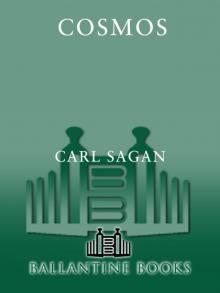 Cosmos
Cosmos Murmurs of Earth
Murmurs of Earth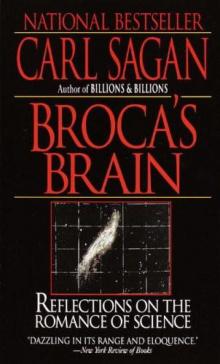 Broca's Brain
Broca's Brain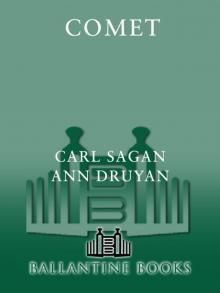 Comet
Comet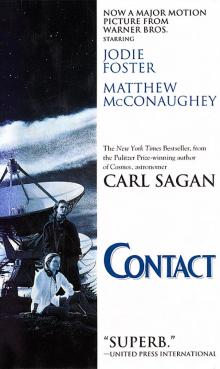 Contact
Contact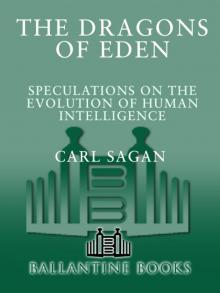 Dragons of Eden
Dragons of Eden Cosmic Connection
Cosmic Connection Shadows of Forgotten Ancestors
Shadows of Forgotten Ancestors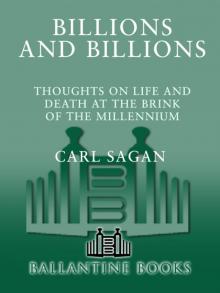 Billions & Billions
Billions & Billions Comet, Revised
Comet, Revised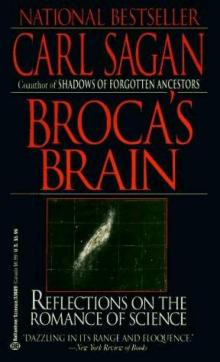 Broca's Brain: The Romance of Science
Broca's Brain: The Romance of Science The Varieties of Scientific Experience: A Personal View of the Search for God
The Varieties of Scientific Experience: A Personal View of the Search for God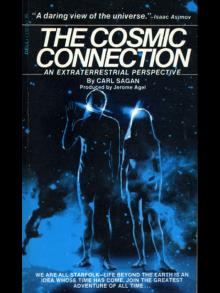 The Cosmic Connection
The Cosmic Connection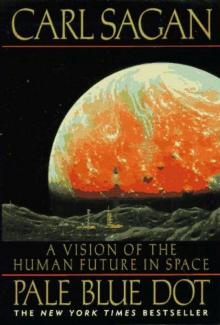 Pale Blue Dot: A Vision of the Human Future in Space
Pale Blue Dot: A Vision of the Human Future in Space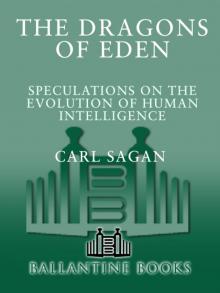 The Dragons of Eden
The Dragons of Eden